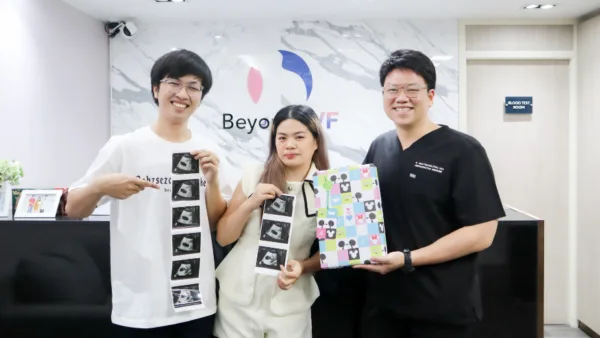Had Tubal Ligation for Years and Multiple Failed ICSI Transfers Elsewhere—Found Success on the First Attempt with Dr. Ton at Beyond IVF!
A 37-Year-Old Woman Who Had Tubal Ligation for Years—After Multiple Failed ICSI Attempts Elsewhere, Found Success on the First Try with Dr. Ton at Beyond IVF!
This case involves a 37-year-old woman who had undergone tubal ligation after having her last child. However, she recently wished to have another baby. Instead of undergoing tubal reversal, which has a lower chance of success through natural conception, she opted for assisted reproductive technology (ART) and initially pursued ICSI at another fertility clinic. Despite multiple embryo transfers, none were successful. There was one instance where she conceived but unfortunately experienced a miscarriage.
Determined to increase her chances of success, she sought treatment at a clinic with higher success rates and came across Beyond IVF, where she found successful cases similar to hers. She decided to consult Dr. PoonSak (Dr. Ton), bringing along her previous medical records for assessment and a personalized treatment plan.
Since her last treatment was over a year ago, Dr. Ton recommended a comprehensive evaluation for both partners to identify the root cause of their infertility struggles. While the woman’s health was normal, her husband’s sperm quality was suboptimal, which could have contributed to the limited number of viable embryos and their poor developmental potential after transfer. Dr. Ton reassured her that ICSI was still a viable option, but this time, preimplantation genetic screening (NGS) would be necessary before embryo transfer. The previous clinic had not performed NGS, which might have led to the miscarriage due to chromosomal abnormalities.
Once her menstrual cycle started, she began ovarian stimulation and underwent egg retrieval. Out of 23 retrieved eggs, 5 developed into blastocysts (the most viable stage at day 5). As advised, she proceeded with NGS screening, and the results revealed that only one embryo was chromosomally normal (No Aneuploidy Detected), while the remaining four had chromosomal abnormalities (Aneuploidy Detected).
Before proceeding with the transfer, Dr. Ton recommended freezing the embryo and delaying the transfer to allow time for optimal uterine preparation. He advised against a fresh transfer, suggesting a frozen embryo transfer (FET) instead, allowing six months for uterine recovery to enhance implantation success.
After completing the preparation phase, she underwent FET with her only viable embryo. The results? A successful pregnancy! She expressed immense gratitude, realizing that if she had continued trying naturally, she might have faced repeated miscarriages due to undiagnosed chromosomal issues. Without the NGS screening, she would never have known that only one embryo out of 23 was truly viable.
Treatment Method: ICSI (Intracytoplasmic Sperm Injection)
Additional Techniques Used:
-
ICSI: A specialized technique that injects sperm directly into the egg to enhance fertilization rates.
-
NGS (Next-Generation Sequencing): Genetic screening to detect chromosomal abnormalities in embryos.
Patient’s Testimonial:
"Thank you so much, Dr. Ton, for making our dream of having another baby come true! Beyond IVF is an amazing fertility center that truly cares about every detail of the treatment. The entire team, from nurses to staff, was incredibly supportive throughout the whole process—from our first consultation to the successful pregnancy. Highly recommended!


